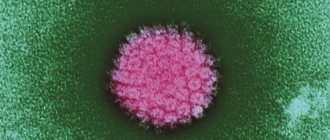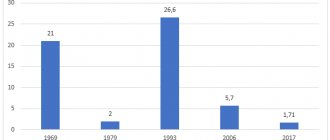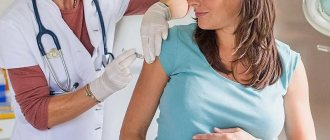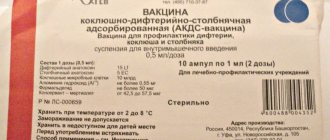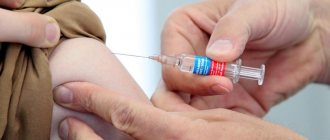Table of contents:
- What is human papillomavirus?
- How are HPVs transmitted and how common are they?
- How is HPV infection diagnosed?
- How is HPV infection treated?
- What is the connection between HPV infection and cervical cancer?
- How to reduce the risk of HPV infection?
- What is the Gardasil vaccine?
- Who is recommended for Gardasil vaccination?
- Should boys be vaccinated?
- What are the contraindications to HPV vaccination?
- Is it possible to get vaccinated during pregnancy and breastfeeding?
- How common are reactions to Gardasil vaccination?
- How does Gardasil interact with other vaccines?
- Vaccination procedure
- How effective is the Gardasil vaccine?
- Do I need to do a PCR or Pap test before vaccination?
- How safe is the HPV vaccination?
Vaccine Gardasil
Efficiency, debatability
It is generally accepted that the most comprehensive medical and statistical data are available from the most powerful American health organizations: the aforementioned FDA, as well as the CDC (Centers for Disease Control and Prevention, a system of the Centers for Disease Control and Prevention) and the National Cancer Institute (part of the National Institutes of Health). , performing the functions of the American Department of Health). The conclusions are clear: the vaccine is effective. The Cancer Institute reports with the necessary caution: a course of vaccination with Gardasil creates lasting immunity to human papillomavirus almost
100% of cases.
The main points of discussion are the lack of reliable and reliable data on the duration of the vaccine (i.e. on the need and advisability of revaccination), as well as on possible delayed side effects. In general, side effects and complications of vaccination are a traditional, painful topic for immunology, causing not just intense, but sometimes violent debate with violent affective reactions among supporters and opponents. Someone reports - trying to do it louder, preferably to the whole world - about “sensational” and “hidden” cases of sudden death, frozen pregnancy, anaphylactic shock; someone in response asks for at least some documented evidence of a cause-and-effect relationship between vaccination and such outcomes (such requests, while reasonable, are immediately interpreted as “paid for and bribed” by pharmaceutical giants). Some people declare side effects such as itching, slight pain at the injection point, hyperthermia, headache, malaise, sometimes fainting, allergic reactions, etc. to be terrible and unacceptable. Perhaps this is truly terrible, but cancer is on the other side of the scale.
Immediate side effects have been well studied, they are declared in the documentation for the vaccine, and the necessary recommendations regarding precautions are given. In addition, any specialist in the field of epidemiology or medical statistics can confirm: if in a sample of, say, one hundred thousand people, each subject is given a teaspoon of distilled water, then there is no doubt that someone will faint. someone will break out in hives, someone will choke and join the statistics of “difficulty breathing due to drug aspiration.” Compared to the data obtained for some other vaccines (also absolutely necessary!), Gardasil can be considered simply safe. Such questions are studied extremely seriously, on huge statistical samples, according to cruel protocols of controlled, blind, randomized studies. It is almost impossible to hide anything truly dangerous in terms of mass use. We would already know.
In conclusion, we repeat: we are talking about real cancer prevention, and not only cervical cancer, but also other HPV-associated varieties. Thank God there is such protection.
And, of course, let's argue. Just don’t forget to get vaccinated, and most importantly, get your daughters and wives vaccinated. And we will live long enough to have time to fight until we are hoarse.
How to reduce the risk of HPV infection?
The risk of HPV infection is reduced only by sexual abstinence or mutually monogamous relationships with an uninfected sexual partner. However, if the partner has been sexually active in the past, monogamy also cannot protect against infection. A condom does not protect against HPV infection, since infection occurs through contact with the skin and genitals of a partner. However, it has been observed that using a condom reduces the risk of cervical cancer caused by HPV.
But only vaccination completely protects against the risk of HPV and cervical cancer.
Gardasil
Please check with the clinic administrators for availability of vaccines.
"Gardasil" is a vaccine drug necessary to combat the human papillomavirus.
The virus affects the skin and mucous membranes, including the genitals and anus. The vaccine manufacturer is American and belongs to the category of recombinant and quadrivalent drugs.
It is in demand for the prevention of cervical cancer, cervical dysplasia, as well as genital warts in the anal and genital area, the appearance of which is caused by papillomavirus types 6, 11, 16 and 18.
"Gardasil" - what kind of vaccine is it?
The vaccine includes antigen kits containing the types of virus described above. The administration of Gardasil allows the body to produce antibodies to HPV. They provide a person with protection from the immune system, which is ready to prevent infection for a long time. The protective mechanism is based on the neutralizing effect of antibodies.
When interacting with a viral antigen, they form a complex that is destroyed by other immune cells. As a result, the affected virus cells are destroyed and the body removes them. This development of events causes the appearance of pathology.
To prolong the memory effect and stimulate B-lymphocytes responsible for the reproduction of antibodies to papillomavirus, vaccination with Gardasil is carried out repeatedly. After this, a lasting immune response is guaranteed.
Why are scientists concerned about human papillomavirus infection?
The medical community is concerned about the human papillomavirus based on the following:
- annual increase in the number of cases;
- the prevalence of the disease over other sexually transmitted infections;
- statistics indicating the detection of papilloma based on test results in 68% of the female population;
- the possibility of a hidden course of the disease;
- scientific confirmation of the connection between the papilloma virus and the onset of oncological processes in 90% of cases, as well as infertility.
To protect against the development of cancer, it is better to get vaccinated at 26 years of age. Then Gardasil will reduce the likelihood of cancer, including such manifestations as condylomas in the anogenital area, dysplastic conditions in women, and adenocarcinoma.
The degree of malignancy of the latter is very high. Gardasil is gradually spreading throughout global health care. The drug is purchased by 125 countries. Twenty of them included it in national vaccination calendars. The vaccine is unique. It is produced without the addition of mercury as a preservative. The constituent components are not capable of self-reproduction in the human body.
Contraindications
The Gardasil vaccination is given exclusively as part of the prevention of human papillomavirus, but not everyone can use it.
Contraindications include:
- current infectious processes;
- age less than 9 and more than 45 years;
- tendency to an allergic reaction to the components of the drug;
- weakness of the immune system;
- problems with blood clotting and the period of gestation, which are considered a relative ban on vaccination.
Prevention of complications
The use of Gardasil requires compliance with certain safety measures:
- before its administration, it is necessary to be tested for human papillomavirus, since the transmission of infection can be not only sexual;
- After vaccination, medical observation is required for a maximum of half an hour;
- The possibility of getting the vaccination site wet within 1 day should be excluded.
Features of the PVI virus and vaccination against it
In addition to the sexual route of acquiring the disease, there is a high risk of acquiring it through the use of medical instruments that have not undergone sterilization treatment.
Newborns become infected from their mother during the birth process. Doctors often diagnose the disease in its acute phase. The virus makes its presence known if there are signs of immune weakening.
Most people do not take the need for screening for infectious diseases seriously. This is a mandatory event prior to visiting the vaccination room. If the infection is already present in the body, Gardasil is powerless.
Representatives of the medical scientific community insist that Gardasil provides protection against tumors in the reproductive organs in 100% of cases. Thousands of volunteers have already been vaccinated. They had good tolerability of the drug.
Vaccination against human papillomavirus infection (PVI) at the Miracle Doctor clinic
The price of Gardasil for vaccination in our medical center does not go beyond affordability. Vaccination is permitted only after a detailed therapeutic examination. The drug is of high quality and has passed the certification procedure. Its high efficiency will give you a feeling of security and confidence in the impossibility of various complications.
The vaccination room in the clinic operates in compliance with all established rules, therefore, the likelihood of side effects is excluded. Miracle Doctor specialists will help you achieve a positive result and get rid of numerous problems that come with the detection of papillomas.
Timely vaccination is the key to your health!
What is the Gardasil vaccine?
This is a quadrivalent recombinant vaccine against the human papillomavirus (HPV), which is almost 100% effective in preventing genital cancers, precancerous epithelial dysplasias and genital warts (genital warts) induced by HPV types 6, 11, 16 and 18.
The vaccine "Gardasil" (against human papillomavirus) is AVAILABLE in both Euromed Kids clinics! The cost of the drug is 10,500 rubles. Sign up!
Gardasil 0.5ml/dose 1 pc. injection suspension syringe
The vaccination course is considered complete even if the interval between vaccinations is violated, if three vaccinations are given within 1 year.
An alternative 2-dose vaccination regimen (0-6 months) with Gardasil® is allowed in persons aged 9-3 years. However, if the second dose is administered earlier than 6 months after the measured dose, a third dose must always be administered.
If the first dose of the Gardasil® vaccine was used for vaccination, then the full course of vaccination should be carried out using the Gardasil® vaccine. The need for revaccination has not been established.
Before use, the vial/syringe with the vaccine is shaken until a homogeneous cloudy suspension is obtained. Loss of homogeneity, presence of inclusions and foreign particles, change in color of the suspension indicate the unsuitability of the vaccine.
The pre-filled vaccine syringe is for one-time use only and in one person only. The contents of the vaccine vial should be administered to each vaccine recipient using an individual disposable sterile syringe with a sterile needle. The entire recommended dose of 0.5 ml must be administered.
The opening of the bottles and the vaccination procedure are carried out in strict compliance with the rules of asepsis and antiseptics. The injection site is treated with 70% alcohol before and after injection.
Use of single-dose vaccine vials
Using a sterile needle, draw 0.5 ml of suspension from a vial with a single dose of vaccine into a disposable sterile syringe. Give the full dose. Throw away the bottle with any remaining vaccine.
Use of single-dose vaccine syringes
Enter the full width content.
Instructions for use of disposable sterile pre-filled single dose syringes complete with safety device
Use the included needle to administer the vaccine. If you want to use a different needle, make sure that the needle is securely attached to the syringe and that its length does not exceed 2.5 cm. This is a necessary condition for the correct operation of the safety device. The syringe is equipped with two removable labels that can be removed after the injection.
Remove the cap from the syringe. By pressing both anti-rotation tabs, secure the syringe and attach the Luer needle by turning it clockwise.
Remove the protective cap from the needle.
Prepare for injection as described above. Press the plunger, holding the syringe firmly under the finger tabs, and inject the entire dose. The HE needle guard will activate if the ENTIRE dose is not injected. Remove the needle. Release the plunger and allow the syringe to move upward until the entire needle is completely covered. To document vaccinations, peel off the removable labels by pulling them slowly. Dispose of the syringe in a sharps container.
Pharmacodynamics
The quadrivalent human papillomavirus (HPV) vaccine is a mixture of highly purified virus-like particles (VLPs) of the recombinant major capsid protein (L1) of HPV types 6, 11, 16 and 18. The L1 proteins are produced by separate fermentation in recombinant Saccharomyces cerevisiae CANADE 3C-5 ( strain 1895) and form VHF by self-assembly. VLPs for each type are purified and adsorbed on an aluminum-containing adjuvant (amorphous aluminum hydroxyphosphate sulfate).
Immunobiological properties
The effectiveness of the Gardasil® vaccine is mediated by the formation of protective immunity with the development of humoral and cellular immune responses against the human papillomavirus. The lifetime risk of acquiring HPV infection, without vaccination, in sexually active people is more than 50%, and it is constantly increasing. Carrying out a course of vaccination with Gardasil® leads to the prevention of diseases caused by HPV.
Clinical effectiveness
Based on studies conducted in 24,358 women and girls from 16 to 45 years of age and 4,055 men and boys from 16 to 26 years of age, the high efficacy and safety profile of the Gardasil® vaccine was confirmed.
In girls and women aged 16 to 26 years, the Gardasil® vaccine effectively prevented cancer and precancerous dysplastic conditions of the cervix, vulva, vagina, and anogenital warts in 98-100% of cases.
Cross-protective efficacy analysis shows that administration of Gardasil® vaccine reduces the risk of developing CIN (cervical intraepithelial neoplasia) 1/2/3 and adenocarcinoma in situ (AIS). caused by the most common oncogenic types of HPV that are not included in the vaccine.
Women 16 to 26 years of age vaccinated with Gardasil® vaccine and included in the per-protocol effectiveness (PPE) population in the main FUTURE II study were followed up in an additional long-term clinical study for 8 years. During this period, no cases of CIN (any grade) caused by HPV types 6, 11, 16 and 18 were reported. In this study, the duration of protection was statistically confirmed to be approximately 6 years.
In women 24 to 45 years of age, Gardasil® vaccine was effective in preventing persistent infection, CIN (any grade), or anogenital lesions caused by HPV types 6, 11, 16, and 18 in 88.7% of cases.
Women 24 to 45 years of age vaccinated with Gardasil® vaccine and included in the per-protocol effectiveness (PPE) population in the main FUTURE III study were followed in an additional long-term clinical study for 6 years. During this period, no cases of CIN (any grade) or genital warts caused by HPV types 6, 11, 16 and 18 were reported.
In boys and men, the Gardasil® vaccine prevented infection with HPV types 6, 11, 16 and 18, causing external genital lesions (anogenital condylomas and perineal, perianal intraepithelial neoplasia, intraepithelial neoplasia of the penis grade 1/2/3) in 90.6% of cases, as well as anal intraepithelial neoplasia (AIN) grade 1/2/3 in 77.5% of cases.
The duration of protection against anal cancer is currently unknown. Men 16 to 26 years of age vaccinated with Gardasil® vaccine and included in the per-protocol effectiveness (PPE) population in the main study (Protocol 020) were followed up in an additional long-term clinical study. At the same time, for 6 years, not a single case of disease caused by HPV was registered (anogenital warts caused by HPV types 6, 11, external genital lesions caused by HPV types 6, 11, 16 and 18, and AIN of any degree caused by HPV 6 , 11, 16 and 18 types).
Immunogenicity
Carrying out a full course of vaccination leads to the formation of specific antibodies to four types of HPV (6, 11, 16 and 18) in more than 98% of those vaccinated.
The presence of immunological memory has been shown during vaccination of seropositive (at the time of vaccination) individuals. In addition, individuals who received an additional dose of Gardasil® vaccine five years after completing a course of vaccination experienced a rapid and significant anamnestic immune response, with geometric mean antibody titers exceeding those obtained one month after the first course of vaccination.
In girls and boys from 9 to 15 years of age, the effectiveness of the vaccine was shown on the basis of immune bridging.
Girls and boys aged 9 to 15 years vaccinated with Gardasil® vaccine in the main study (Protocol 018) were followed up in an additional long-term clinical study.
Gardasil® vaccine also provides protection in girls and women ages 9 to 26 years against CIN (grade 1/2/3) or AIS caused by HPV types 31, 33, 52, and 58.
Immune response to 2-dose vaccination with Gardasil®
In a clinical study, it was demonstrated that the immune response (at 7 months after the first dose) in girls aged 9-13 years (n=259) who received 2 doses of Gardasil® vaccine (0-6 months regimen) was no lower than the immune response in women aged 16-26 years (n=310) who received 3 doses of the Gardasil vaccine (0-2-6 months).
The duration of immune protection with 2-dose vaccination with Gardasil® has not been established.
Pharmacokinetics
Data on the pharmacokinetics of the Gardasil® vaccine are not available.
Indications for use Gardasil 0.5 ml/dose 1 pc. injection suspension syringe
The Gardasil® vaccine is indicated for use in girls and women aged 9 to 45 years to prevent:
- cancer of the cervix, vulva, vagina and anal canal caused by HPV types 16 and 18;
anogenital warts (condiloma acuminate), caused by HPV types 6 and 11;
The Gardasil® vaccine is indicated for use in boys and men aged 9 to 26 years to prevent:
- anal cancer caused by HPV types 16 and 18;
- anogenital warts (condiloma acuminate), caused by HPV types 6 and 11;
- precancerous, dysplastic conditions, and intraepithelial neoplasia of the anal canal 1/2/3 degrees caused by HPV types 6, 11, 16, 18.
Contraindications
Hypersensitivity to the active components and excipients of the vaccine. If hypersensitivity symptoms occur after administration of Gardasil® vaccine, administration of a subsequent dose of the vaccine is contraindicated.
Bleeding disorders due to hemophilia, thrombocytopenia, or while taking anticoagulants are a relative contraindication to intramuscular Gardasil® vaccine unless the potential benefits of vaccination significantly outweigh the risks associated with it. If the choice is made in favor of vaccination, it is necessary to take measures to reduce the risk of post-injection hematoma formation.
If a patient has an acute, severe febrile illness, administration of Gardasil® vaccine should be delayed. However, the presence of a mild infection or a slight rise in body temperature is not a contraindication to vaccination.
Carefully:
APPLICATION IN PEDIATRIC PRACTICE
The safety and effectiveness of Gardasil® vaccine have not been evaluated in children under 9 years of age.
APPLICATION IN GERIATRIC PRACTICE
There are no data evaluating the safety and effectiveness of Gardasil® vaccine in adults over 45 years of age.
Application Gardasil 0.5 ml/dose 1 pc. suspension for injection syringe during pregnancy and breastfeeding
There is no evidence that the administration of Gardasil® vaccine has adverse effects on fertility, pregnancy or the fetus that would cast doubt on its safety. There are no specifically designed and well-controlled studies in pregnant women.
There are insufficient data on the use of Gardasil® vaccine during pregnancy and on the potential effects of Gardasil® vaccine on female reproductive function and on the fetus in pregnant women to recommend use of the vaccine during pregnancy.
Patients should be warned about the need to protect against pregnancy during the course of vaccination, and if pregnancy occurs, vaccination should be postponed until completion.
Clinical trials testing the effectiveness, immunogenicity and safety of Gardasil® vaccine in nursing mothers and infants have shown that Gardasil® vaccine can be administered to breastfeeding women.
special instructions
Infection with oncogenic types of HPV is a prerequisite for the development of cervical cancer (squamous cell and adenocarcinoma), cancer of the vulva, vagina, precancerous dysplastic conditions, and condylomas. In addition, in men and women, HPV infection is a cause of cancer of the external genitalia and anal canal. HPV infection significantly increases the risk of developing head and neck cancer, especially oropharyngeal cancer, and causes recurrent respiratory papillomatosis in children and adults.
Are common. When deciding whether to vaccinate, it is necessary to weigh the possible risk of previous HPV infection against the potential benefit of vaccination. Gardasil® Vaccine is not intended to treat the following conditions: cervical, vulvar or vaginal cancer, CIN, VIN, VaIN or active condylomatosis and is given for preventive purposes only.
The vaccine is prophylactic and is designed to prevent infection with types of HPV that the patient does not have. The vaccine has no effect on the course of active infections caused by HPV.
As with any vaccine, not all vaccinees receive a protective immune response when using Gardasil®.
The drug does not protect against sexually transmitted diseases of other etiologies. Therefore, vaccinated patients should be advised to continue using other preventive measures.
Subcutaneous and intradermal administration of the vaccine has not been studied and is therefore not recommended.
As with the introduction of any vaccine, the treatment room should always have appropriate medications ready in case of a rare anaphylactic reaction to the vaccine and emergency and anti-shock therapy. Immediately after the vaccine is administered, the patient is under medical observation for 30 minutes in order to timely identify post-vaccination reactions and complications and provide emergency medical care. Fainting may occur with any vaccination, especially in adolescents and young women.
The decision to administer the drug or delay vaccination due to current or recent illness accompanied by fever depends largely on the etiology of the disease and severity.
In persons with impaired immune system reactivity due to the use of immunosuppressive therapy (systemic corticosteroids, cytotoxic drugs, antimetabolites, alkylating drugs), genetic defect, infection with the human immunodeficiency virus (HIV) and other reasons, the protective effect may be reduced (see “INTERACTIONS WITH OTHER DRUGS”). DRUGS").
Gardasil® vaccine should be administered with caution to persons with thrombocytopenia and any bleeding disorders as bleeding may occur in such persons following intramuscular injection.
Health care personnel must provide all necessary information about vaccination and the vaccine to patients, parents and caregivers, including information about the benefits and risks involved.
Vaccine recipients should be warned to report any adverse reactions to their doctor or nurse and that vaccination does not replace or replace routine screening examinations. To achieve effective results, the vaccination course must be completed in full, unless there are contraindications.
Impact on the ability to drive vehicles and operate machinery
No studies have been conducted on the effect on the ability to drive a car or operate machinery.
Overdose
There have been reports of cases of Gardasil® vaccine being administered in doses higher than recommended. In general, the nature and severity of adverse events during overdose were comparable to those with the introduction of recommended single doses of the Gardasil® vaccine.
Side effects Gardasil 0.5 ml/dose 1 pc. injection suspension syringe
Adverse reactions whose incidence was at least 1% in persons receiving Gardasil® vaccine and greater than that in persons receiving placebo are listed below according to the organ/class system.
Very common (≥ 1/10); often (≥ 1/100,
Musculoskeletal and connective tissue disorders - Common: pain in the extremities.
General disorders and disorders at the injection site - Common: pyrexia; Very common: redness, pain and swelling; Common: itching, hematoma.
These local reactions occurred more frequently in the Gardasil vaccine group than in any product containing aluminum hydroxyphosphate sulfate amorphous adjuvant or in the placebo group.
Most local reactions were mild.
Respiratory, thoracic and mediastinal disorders
In addition, bronchospasms, as a serious side effect, were very rare.
During the post-registration use of the Gardasil® vaccine, spontaneous information was received about the development of the following adverse reactions in vaccine recipients, the frequency of which and the relationship with the vaccine cannot be reliably assessed.
Infectious and parasitic diseases: phlegmon.
Blood and lymphatic system disorders: lymphadenopathy, idiopathic thrombocytopenic purpura.
Nervous system disorders: dizziness, headache, Guillain-Barre syndrome, acute disseminated encephalomyelitis, fainting, sometimes accompanied by tonic-clonic convulsions.
Gastrointestinal disorders: nausea, vomiting.
Musculoskeletal and connective tissue disorders: arthralgia, myalgia.
General disorders and disorders at the injection site: asthenia, fatigue, chills, discomfort.
Immune system disorders: hypersensitivity reactions, including anaphylactic/anaphylactoid reactions, bronchospasm and urticaria.
Drug interactions
Use with other vaccines
Gardasil® vaccine can be administered simultaneously (at another recommended site of the body) with recombinant hepatitis B vaccine, meningococcal diphtheria toxoid conjugate vaccine, and inactivated diphtheria, tetanus, pertussis vaccine (acellular component), polio vaccine (inactivated) .
Use with common medications
The use of analgesics, anti-inflammatory drugs, antibiotics and vitamin preparations did not affect the effectiveness, immunogenicity and safety of the vaccine.
Use with hormonal contraceptives
The use of hormonal contraceptives did not affect the effectiveness, immunogenicity and safety of the Gardasil® vaccine.
Use with steroids
Inhaled, topical and parenteral steroids did not affect the immunogenicity and safety of the Gardasil® vaccine.
Use with systemic immunosuppressants
There are no data on the simultaneous use of systemic immunosuppressants and the Gardasil® vaccine.
In persons taking immunosuppressants (systemic corticosteroids, cytotoxic drugs, antimetabolites, alkylating drugs), the protective effect may be reduced.
Who is recommended for Gardasil vaccination?
Children and teenagers from 9 to 17 years old, young women from 18 to 26 years old. Ideally, you should be vaccinated against HPV before your first sexual contact, since the vaccine is most effective for those girls and women who have not yet been infected with any of the HPV types included in it. Sexually active women can also be vaccinated, but in this case the vaccine will only protect them against types of HPV that they have not yet been infected with.
Gardasil instructions
Vaccination against HPV Gardasil for girls and women is aimed at preventing diseases caused by the human papillomavirus (papillomatosis, genital and extragenital condylomatosis, as well as genital cancer). You can buy Gardasil and get vaccinated against the papilloma virus in Moscow in our clinic. We advise you to make an appointment with a gynecologist and get a preliminary consultation regarding indications and possible contraindications!
Carrying out a full course of Gardasil vaccination leads to the formation of specific antibodies to four types of HPV - 6, 11, 16 and 18 - in a protective titer for the cervix in women in more than 99% of those vaccinated for a period of at least 36 months in all age groups. It is almost 100% effective in preventing cancer of the cervix, anus, vulva, precancerous epithelial dysplasia and genital warts caused by HPV types 6, 11, 16 and 18. Gardasil-9 is not currently supplied to the Russian Federation (2021). If the vaccine hits the market, the expected price of Gardasil-9 in Moscow will be about 15,000 rubles.
pharmachologic effect
Quadrivalent vaccine against human papillomavirus (HPV). Gardasil vaccine is a sterile IM suspension prepared from a mixture of highly purified virus-like particles (VLPs) of the recombinant major capsid protein (L1) of HPV types 6, 11, 16 and 18. L1 proteins are produced by separate fermentation in recombinant Saccharomyces cerevisiae CANADE 3C -5 (Strain 1895) and form VHF by self-assembly. VLPs for each type are purified and adsorbed on an aluminum-containing adjuvant (amorphous aluminum hydroxyphosphate sulfate).
Application of Gardasil
Gynecologists recommend that girls over 12 years of age and women be vaccinated with Gardasil in the following cases:
1. Prevention of the following diseases caused by human papillomavirus types 16, 18 and 6, 11 in girls and adolescents aged 9 to 17 years and in young women aged 18 to 26 (35) years:
► cancer of the cervix, vulva and vagina; ► genital condylomas in women (condiloma acuminata);
2. Prevention of precancerous dysplastic conditions in children and adolescents aged 9 to 17 years and in young women aged 18 to 35 years:
► cervical adenocarcinoma in situ (AIS); ► cervical intraepithelial neoplasia grades 2 and 3 (CIN 2/3); ► vulvar intraepithelial neoplasia grades 2 and 3 (VIN 2/3); ► vaginal intraepithelial neoplasia grades 2 and 3 (VaIN 2/3); ► cervical intraepithelial neoplasia grade 1 (CIN 1).
Preparation and introduction
Gardasil vaccination is ready for use, no additional dilution is required. Before use, the vial/syringe with the vaccine is shaken until a homogeneous cloudy suspension is obtained. Loss of homogeneity, appearance of included particles and change in color of the suspension indicate its unsuitability. The filled syringe is for one time use only and for one person only. The opening of the bottles and the vaccination procedure are carried out in strict compliance with the rules of asepsis and antiseptics. The injection site is treated with 70% alcohol before and after the injection. The entire recommended dose should be administered.
The rules of administration are as follows: draw 0.5 ml of the drug solution from a bottle with a single dose of the vaccine with a sterile needle into a disposable syringe that does not contain preservatives, antiseptics and detergents. Administer the entire dose. Throw away the ampoule with any remaining vaccine.
Restrictions
Contraindications:
- hypersensitivity to the active components and fillers of the vaccine;
- If symptoms of hypersensitivity to Gardasil occur, administration of a subsequent dose of the vaccine is contraindicated.
Relative contraindications:
- bleeding disorders due to hemophilia, thrombocytopenia or while taking anticoagulants.
Use of Gardasil during pregnancy and breastfeeding
Category B. The potential effects of Gardasil vaccine on reproductive function in women and on the fetus have not been studied. There is no evidence that Gardasil vaccine has adverse effects on fertility, pregnancy, or the fetus. Patients should be warned about the need for protection during the course of vaccination, and if pregnancy occurs, HPV vaccination should be postponed until completion. According to experts, Gardasil can be administered to women during lactation (breastfeeding).
special instructions
The efficacy and safety of subcutaneous and intradermal administration have not been studied and these routes of administration are not recommended. Gardasil is not intended to treat cervical, vulvar or vaginal cancer, CIN, VIN or VaIN, or active condylomatosis. The drug does not protect against diseases caused by other types of HPV and other etiologies.
As with any vaccine, it is always necessary to have appropriate medications available to immediately relieve an anaphylactic reaction. The decision to administer or delay Gardasil vaccination due to current or recent illness with fever depends largely on the etiology of the illness and severity. Mild fever and mild upper respiratory tract infection are usually not contraindications for use.
Those vaccinated should be warned about the need to protect against pregnancy during the course, about the need to report any unwanted reactions to the doctor or nurse, and that it does not replace or cancel routine screening examinations and tests for HPV. To achieve effective results, the course of administration must be completed completely, unless there are contraindications.
Overdose There are reports of cases of administration in dosages exceeding the recommended ones. In general, the nature and severity of adverse events were comparable to those with the introduction of recommended single doses.
Drug interactions The results of clinical studies show that Gardasil vaccine can be administered simultaneously (at a different site) with recombinant hepatitis B vaccine. The use of analgesics, anti-inflammatory drugs, antibiotics and vitamin preparations did not affect the effectiveness, immunogenicity and safety. Hormonal contraceptives, corticosteroids for inhaled local and parenteral use did not affect the immune response. There are no data on the simultaneous use of systemic immunosuppressants.
Conditions and periods of storage The drug should be stored out of the reach of children, protected from light, at a temperature of 2° to 8°C; do not freeze.
Regulatory documents Having decided to take Gardasil in Moscow in our clinic, you do not have to worry about the quality of the vaccine. We only have original drugs from the official supplier in the Russian Federation. Next, you can see photos of the main documents on the quality of the medicinal product (Certificates of Conformity issued by the regulatory authorities of our country, as well as a Certificate from the manufacturer).
HPV vaccination for girls
The use of human papillomavirus vaccinations in pediatrics is unknown in children under 9 years of age and the safety and effectiveness of Gardasil vaccine in this age group has not been evaluated. Pediatric gynecologists recommend that girls be vaccinated against HPV before they become sexually active, i.e. during the period of “zero sexual activity”, when the risk of encountering a pathogen is minimal. Please note - not excluded, but quite low.
Why is that? As is known, HPV infection does not occur exclusively through sexual contact - the contact and household route of transmission of the virus within the family and children's group is currently relevant. Therefore, to exclude the possibility of the virus entering the body by relying on the lack of intimacy would be, at a minimum, naive. Considering all of the above, it becomes clear that the problem is not far-fetched and that vaccination is not useless. Whether teenage girls should be vaccinated against HPV is, of course, up to their parents to decide. If you decide in favor of vaccination, you can get Gardasil in Moscow in our clinic.
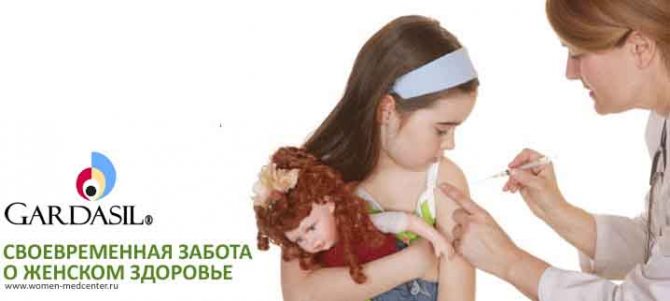
The correct algorithm of actions would be as follows:
- Make an appointment with a pediatric gynecologist/gynecologist;
- Be examined for the possible presence of papillomas/condylomas;
- Get tested for high-risk HPV types;
- Make Gardasil (see prices below).
Private question: “If HPV is detected in the tests, is Gardasil vaccination indicated?”
This vaccination is aimed against the 4 most “unpleasant” types of the virus - 6, 11, 16 and 18. Failure to detect them in tests for hidden infections is a direct indication to get vaccinated. If the detected types do not belong to the four listed, the indication is similar. Identification of one or two types of the four above does not deny the possibility of getting the HPV vaccine, but its effectiveness in this case will be limited.
Gardasil vaccination regimen
The vaccine is administered intramuscularly into the deltoid muscle or anterolateral thigh area. Not intended for intravenous administration. For children and teenage girls aged 9 to 17 years and young women, Gardasil is injected in a single dose of 0.5 ml. (1 standard bottle/syringe). The recommended course of Gardasil consists of 3 doses and is carried out according to the scheme (0-2-6 months).
Important information about HPV vaccination:
- This is an intramuscular vaccine only. The injection site is the deltoid muscle or thigh area (upper outer surface of the middle third).
- Gardasil is applied three times. 0.5 ml is administered on the day of vaccination initially and again in the same dosage on the 2nd and 6th month from the first day.
- There is also an accelerated course, in which there will be the following scheme: Gardasil again after a month, and then again three months after the second vaccination.
- A course completed within a year is considered completed, even with irregular intervals.
- Gardasil-9 cannot be bought or ordered at a pharmacy in Moscow, because this drug as of the period winter 2021 - spring 2021. was not officially supplied to the territory of the Russian Federation.
Side effect
After administration of the HPV vaccine Gardasil, in some cases local and general reactions may develop: according to clinical studies, the following adverse events occurred with a frequency of at least 1% and more often than in the placebo group.
Local reactions: ≥1% - redness, swelling, pain and itching at the injection site. The duration of reactions does not exceed 5 days and does not require drug therapy.
General reactions: ≥ 1% - headache, short-term increase in body temperature; in some cases - gastroenteritis, inflammation of the pelvic organs. Considering the theoretical possibility of developing immediate allergic reactions in particularly sensitive individuals, medical supervision must be provided for 30 minutes after administration.
Prices for Gardasil
How much does the HPV vaccine cost for girls and adult women, as well as related services?
| Service | Price |
| Gardasil | 14500 |
| Gardasil-9 | No |
| Consultation with a gynecologist * | 2 500 |
| HPV tests types 6 and 11 * | 650 |
| Tests for HPV types 16 and 18 * | 650 |
| * - optional |
Should boys be vaccinated?
The vaccine is also effective for boys, but experts debate whether widespread vaccination is justified, weighing the cost of the vaccine against the incidence of penile and anal cancer. In 2012-2014 studies in the United States, HPV vaccination was also offered to boys. We recommend, if possible, that boys be vaccinated against HPV, as the prevalence of anal cancer is growing, and genital warts are also not harmless and can lead to delayed and painful urination.
Vaccination procedure
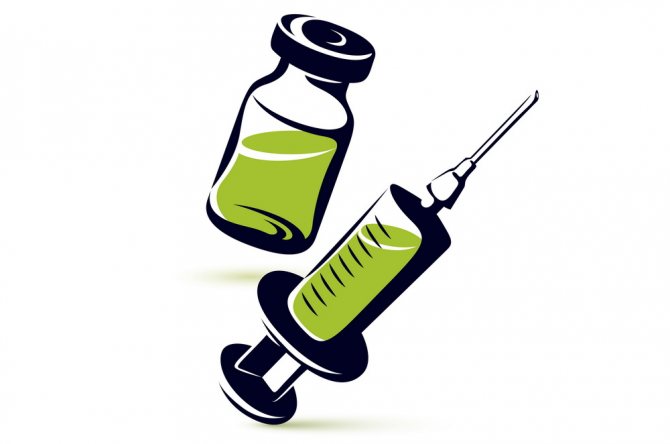
Gardasil is injected intramuscularly into the deltoid muscle or anterior thigh. The recommended course of vaccination consists of 3 doses and is carried out according to the following scheme: first dose - on the appointed day; the second - 2 months after the first; the third - 6 months after the first. An accelerated vaccination schedule is allowed, in which the second dose is administered 1 month after the first vaccination, and the third - 3 months after the second vaccination.
If the interval between vaccinations is violated, the vaccination course is considered completed if 3 vaccinations are carried out within 1 year. The vaccine begins to work a month after vaccination.
Gardasil, 0.5 ml/dose, suspension for intramuscular administration, 0.5 ml, 1 pc.
V/m,
into the deltoid muscle or anterolateral thigh. The vaccine is not intended for intravenous administration.
For children and adolescents aged 9 to 17 years and young women aged 18 to 26 years, a single dose of the vaccine is 0.5 ml.
The recommended course of vaccination consists of 3 doses and is carried out according to the following scheme: first dose - on the appointed day; the second - 2 months after the first; the third - 6 months after the first.
An accelerated vaccination schedule is allowed, in which the second dose is administered 1 month after the first vaccination, and the third - 3 months after the second vaccination.
If the interval between vaccinations is violated, the vaccination course is considered completed if 3 vaccinations are carried out within 1 year.
The vaccine is ready for use; no additional dilution or resuspension is required. Before use, the vial/syringe with the vaccine is shaken until a homogeneous cloudy suspension is obtained. Loss of homogeneity, the appearance of included particles and changes in the color of the suspension indicate the unsuitability of the vaccine.
The syringe filled with the vaccine is for one time use only and for one person only.
The opening of the bottles and the vaccination procedure are carried out in strict compliance with the rules of asepsis and antiseptics. The injection site is treated with 70% alcohol before and after the injection.
The entire recommended dose should be administered.
Rules for administering the vaccine
Single dose vials of vaccine:
draw 0.5 ml of suspension from a bottle with a single dose of the vaccine with a sterile needle into a disposable syringe that does not contain preservatives, antiseptics and detergents. Administer the entire dose. Throw away the bottle with any remaining vaccine.
Syringes with a single dose of vaccine:
inject the entire contents of the syringe completely.
Disposable, sterile, pre-filled single dose syringes complete with safety device:
The inserted needle should be used to administer the vaccine. If it is necessary to use another needle, make sure that it is securely attached to the syringe and that its length does not exceed 2.5 cm, this is a prerequisite for the correct operation of the protective device.
Remove the cap from the end of the syringe. By pressing both anti-rotation protrusions, secure the syringe and attach the Luer needle by turning clockwise. Remove the protective cap from the needle.
When performing an injection, as indicated above, you should press the plunger, holding the syringe firmly under the finger protrusions and inject the entire dose. The needle guard will not work unless the entire dose is injected. Remove the needle. Release the plunger and allow the syringe to move upward until the entire needle is completely covered. To document vaccinations, peel off the removable labels by slowly pulling them out. After completing the procedure, throw the syringe into a sharps container.
How effective is the Gardasil vaccine?
It is 100% effective in preventing diseases caused by the four types of HPV included in it, if the woman has not yet been infected with them. For women who have already been infected, the effectiveness is somewhat less.
It is important that pre-existing HPV infections cannot be cured by vaccination. More importantly, approximately 30% of cervical cancers are caused by rarer types of HPV and therefore cannot be prevented by vaccination. Therefore, vaccinated girls and women should, nevertheless, regularly conduct a PAP test.
What is the vaccine?
The vaccine is in suspension form, it is completely ready for use and does not require additional solvents. Gardasil is stored in accordance with the temperature conditions specified in the instructions. At CELT, all medications are stored at the required temperature in a room licensed for such storage.
The Gardasil vaccine contains recombinant antigens of human papillomavirus types 6,11,16 and 18. These antigens are synthesized protein molecules and have the same structure as the capsid protein of human papillomaviruses. Entering the body, antigens provoke the production of specific antibodies, which forms immune defense. At the time of infection, papillomaviruses are destroyed by ready-made antibodies and do not have the opportunity to grow and have a pathogenic effect on the body. There are no active viral antigens in the composition, the drug is non-toxic.
